The Independent's journalism is supported by our readers. When you purchase through links on our site, we may earn commission.
Madrid city guide: Where to stay, eat, drink and shop in Spain’s glam capital
It may not have the quaintly ageing city centre of its more touristy Spanish rivals, but Madrid has a glam-gritty charm all of its own, says Lucy Thackray. Not to mention the food...

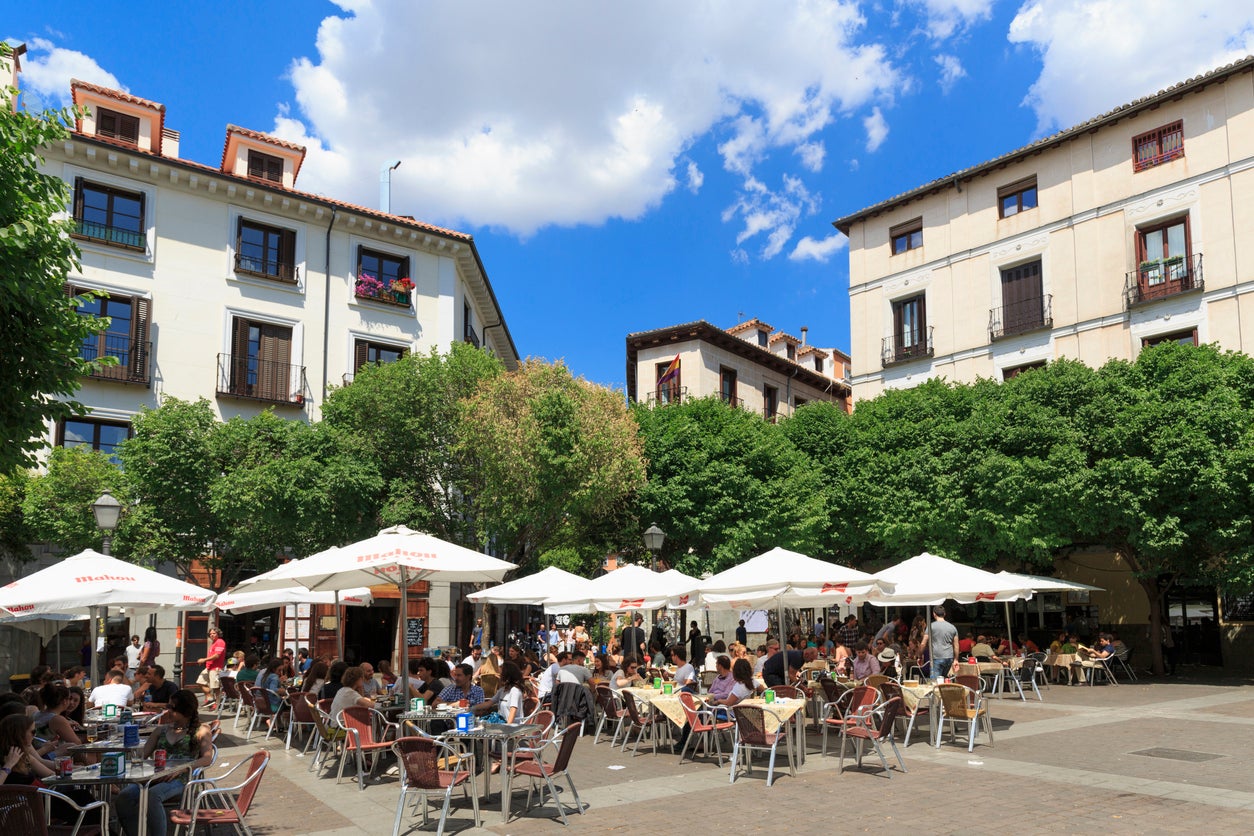
Why don’t people think of Madrid for a city break? Barcelona hogs the headlines while Seville and Granada lure the history buffs – meanwhile, places like Bilbao and Valencia are on the rise for weekenders. In a way, it’s a first city that’s been shunted down to second city by tourists, voting with their feet.
Yet Spain’s capital has all of the late-night fun, bargain tapas and creative buzz of its siblings – plus a lot more art history and swirling royal architecture to see as you wander. There’s a faded grandeur to its old kingly stomping grounds and a graffiti-slicked grunginess to its rejuvenated hipster districts, but the clash of old and new is all part of the fun.
It is, however, big. So pick the neighbourhoods you want to dip into – there are easily five to seven worth your time – and plan mornings and afternoons around seeing their highlights. Blissfully, there are only a couple of truly “must-see” sights that you’ll pay to enter – most are palaces, monuments and parks you can stroll by or through – and you can skip the underwhelming city centre (around “Sol”) altogether, bar the fun Mercado San Miguel. Best of all, there’s a huge range of accommodation and dinner options to choose from, whether your jam is celeb-fave five-stars, edgy hostels, bargain caffs or swanky power lunch spots. If you simply love being in Spain, this is a decadent place to while away a few days in style.
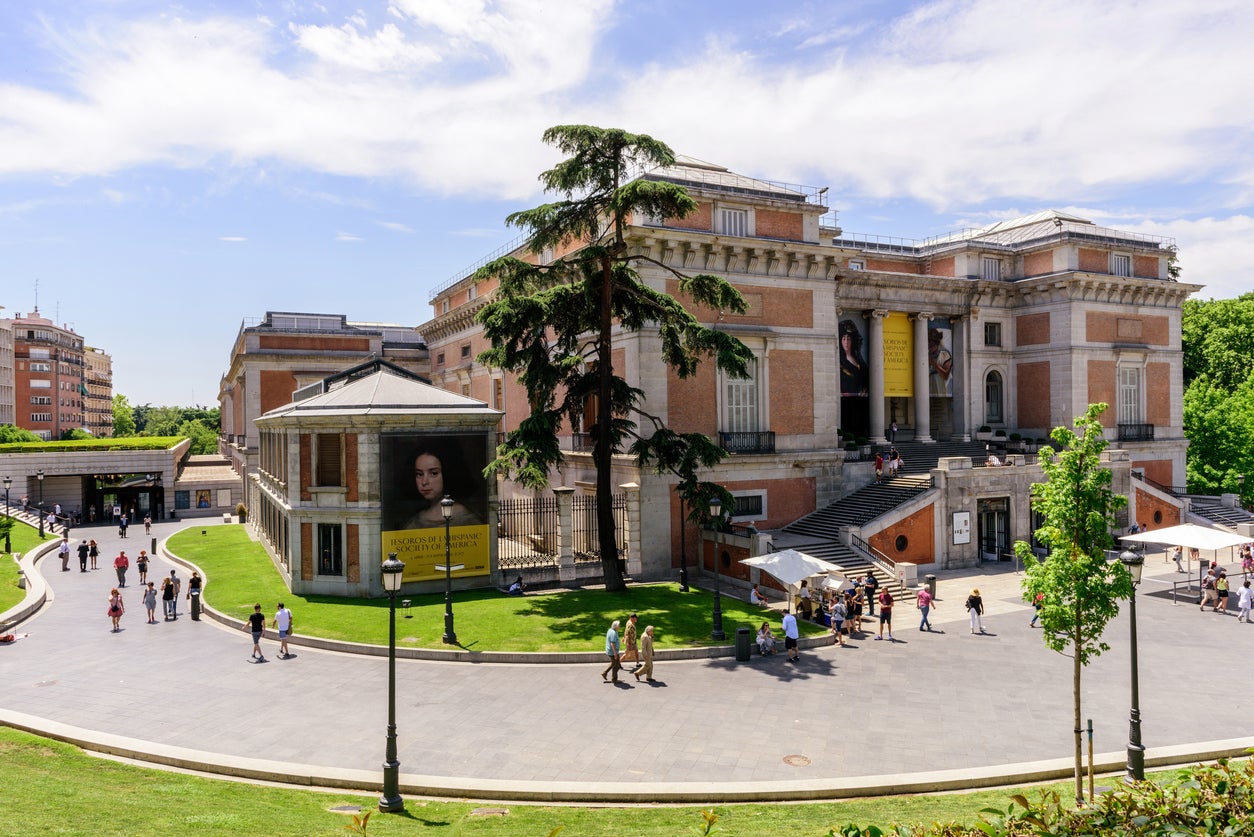
What to do
Promenade in Retiro Park
Madrid’s sprawling, elegantly faded green space, Parque de El Retiro, hugs the main avenue that leads to the city’s two biggest art museums as well as the main city station, Atocha. Grab a morning coffee and stroll around it before heading to one of them; you’ll spy huge former palaces with glass domes and pretty painted tiles; a huge, serene boating pond; trickling fountains; statues; and a glinting “Crystal Palace” modelled on London’s in the late 19th century. The latter is now used as an exhibition space by the Reina Sofia Museum – pass the fizzing fountain in front and stop in to see site-specific projects and one-off exhibitions.
Spanish art history 101
Madrid has two main galleries: the Museo del Prado and the Reina Sofia. The former is a classic stroll through Spanish art history, all mood-lighting and hushed hallways, while the latter is a maze of bright-white, contemporary studios featuring edgy photography, vivid protest art and, most famously, Picasso’s Guernica. Both galleries are in the southeast corner of Madrid’s Centro zone, beside the park, but both are epic and deserve separate spells of attention, so try to go on different days. Brilliantly, each also offers certain hours where you can visit for free. The Prado’s are: Mon to Sat 6-8pm and Sun 5-7pm; the Reina Sofia’s are: Mon to Sat (excluding Tuesdays, when it’s closed) 7-9pm, or Sun 12.30-2.30pm. If you only have time for one? Unless you’re a particular fan of Cubism or Surrealism, the Prado feels far more sumptuous.
Wander its character-packed districts
Sprawling Madrid has so many distinct neighbourhoods that you’ll probably only dig into half of them during a classic long weekend. So do some research and pick your favourites: La Latina is a must for mid-evening drinks (see below), while Chueca is the hip dining and shopping quarter that comes alive at weekend brunch times. Youthful Malasaña will fill an afternoon with cute indie shops, unpretentious cafes and tiny restaurants. The Barrio de las Letras may look sleepy during the day, but at night it has tons of subtle, tiny food and drink gems to dig into, including some fantastic dive bars. If you can, base yourself near one of these four so you’ve a maze of little social hangouts to explore by night. The Sol/Gran Via areas are least glam and most touristy – if you skip these, you won’t be missing out.
See some flamenco
Madrid isn’t the home of flamenco, Spain’s impassioned, stomping dance to hot-blooded guitar ballads – that honour goes to Seville, and wider Andalucia. But, being the capital, the dancers and tablaos (flamenco bars) here are still world-class. There are several bijou tablaos across town, but for something once-in-a-lifetime, do the supper club version at wood-beamed Corral de la Moreria. Of the two evening shows, opt for the later, 9.30pm start (only wussy tourists do the 6.30) – but be aware that you’ll be feasting and toasting until the early hours. Its musicians and dancers are second to none, celebs often sneak in to watch, and the food is worth every (considerable) penny. The show alone costs €50 (£41.60), while menus start at €69 and rise to €85 for a tasting menu. For something steeped in tradition, you can even do paired sherries, with rare bottles brought up from the cellar.
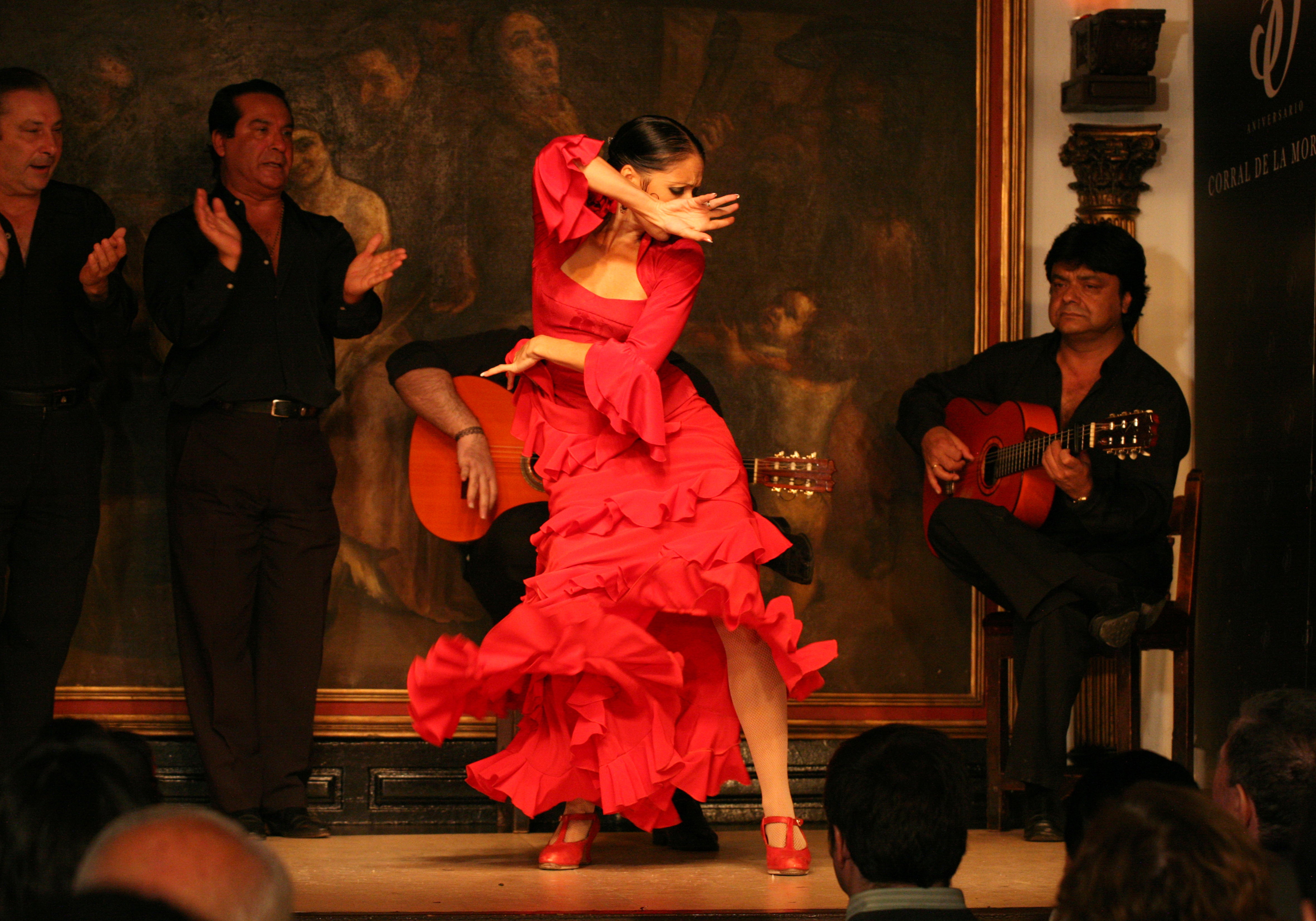
Where to stay
For a basic, chic and immaculate stay within a short suitcase’s drag of the main station – also very close to key sights Retiro Park, the Prado and Reina Sofia – the Atocha Hotel from Hilton’s Tapestry Collection ticks all the boxes. Clean, bright rooms have minimalist design, trendy light fixtures and colour-pop furniture; larger suites have living rooms and large kitchenettes that will make things easier for families. Doubles from £155, room only. hilton.com
For a central base with striking design and a rooftop for warm days, you want Hotel Urban. This all-rounder is intriguing at first glance – all hefty steel beams, gold mosaic, glinting black marble and priceless artifacts brought back from Papua New Guinea, Cambodia and Burma. The front desk team are like super-concierges and greet you with welcome cava and huge jars of penny sweets. But it also has a Michelin-starred Mexican restaurant, Cebo, where you’ll have the best Eggs Benedict of your city break life, plus a mellow rooftop with a plunge pool and cocktail bar. Doubles from £228, B&B. hotelurban.com
To do Madrid like the divas and diplomats do, it has to be URSO Hotel and Spa, hiding between the cool hipster neighbourhood of Malasaña and more placid, residential Chamberí. In a sliver of town with elegant neoclassical architecture, it’s got a grand townhouse feel, with a glossy lobby filled with lilies and trickling water features, and a basement spa with a fizzing whirlpool for before or after your treatment. Don’t miss the churros and hot chocolate “afternoon tea”. Doubles from £304, B&B. hotelurso.com
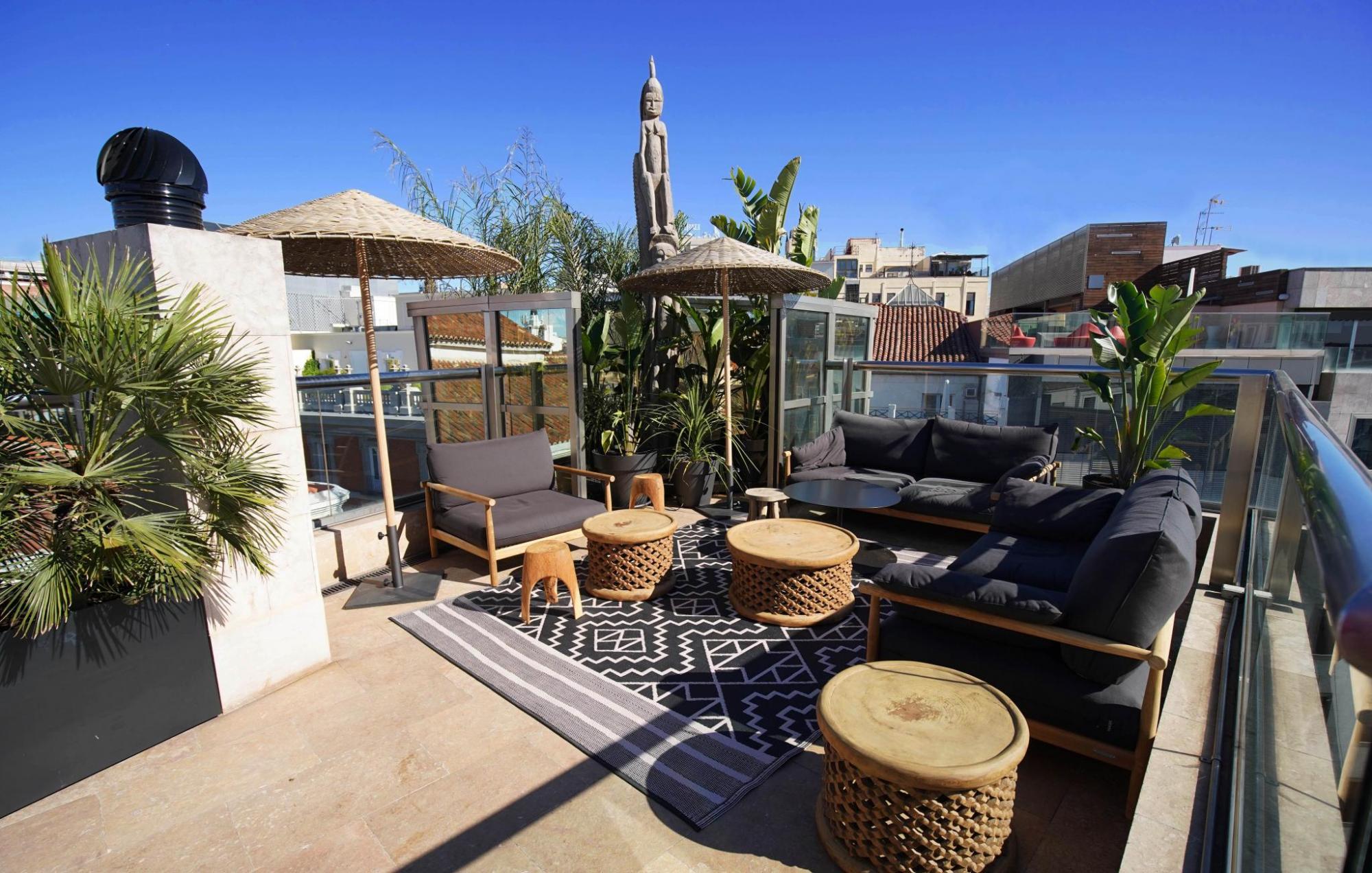
Where to eat
Whether you go for two nights or 30, you probably won’t have enough meal times to eat everywhere you want to in Madrid. You can’t swing a cat here without bashing it against some divine-looking alfresco square, industrial-cool bistro or interiors-heaven Michelin joint. So do your research and pick your must-eats: churros, brunch, seafood, tortilla and a food market should all be on your hit-list.
There are a handful of brilliant food markets in Madrid, but the most popular – for good reason – are Mercados San Miguel and San Anton. The former is right in the tourist centre, near Plaza Mayor, and is by far the busiest. But it’s a stylish affair, a pretty cast-iron structure dating back to 1916, with prettily curated stalls selling everything from €1 tapas to €14 cones of fried anchovies. Grab your food then sit at communal counters or benches to tuck in. It always seems to be busy, but go between 4 and 7pm for your best chance of a lull. San Anton is its hipster cousin in Chueca: much more metallic, industrial design, much more no-frills catering, and a younger crowd, but more locals.
Churros are a big deal here. The oldest and quaintest spot to have them is San Gines, in the old town – but you’re a more patient tourist than I if you stick out the insane queues. Luckily my ex-local pal had whispered a back-up before I left: Valor, a chain “where all the abuelas (grannies) go anyway”.
Cadaqués, in the posh Salamanca district, is the place to hit for a special occasion seafood feast. With the laid-back, wicker-and-blue-tile interior of a beach chiringuito, it does huge pans of simmered rice, fresh-fresh oysters and amazing cocktails using the Spanish tipple Gin Mare. Be sure to order the melting chocolate-cream cake flecked with salt and olive oil.
In Chueca, Celso Y Manolo is a vibrant locals’ lunch spot modelled on an old-school neighbourhood cafe. It does wholesome Spanish wonders such as “four types of Spanish tomato with four types of olive oil”, plus their own quirky takes on tortilla, scrambled eggs and taquitos. Plus the menu is styled like a vintage newspaper, which is always fun.
Talking of tortilla, my most-recommended stop was the humble Pez Tortilla, a down-to-earth, rock’n’roll blasting café selling big wedges of the beloved egg and potato creation like hot cakes. Like San Miguel, a queue here seems inevitable – as the locals tend to lunch late, we managed to get in after only a few minutes’ wait at 12pm on a Tuesday. Whichever flavour you go for, it’ll be nothing like the chilled, rigid tortilla of supermarket fridges – this is the real, oozing, golden, half-liquid real deal.
Where to drink
La Latina – a neighbourhood, not a bar, where most of the locals flock for mid-to-late evening drinks each night, spilling out onto the street from pub-like bars and subtle cocktail joints along Calles Cava Baja and Cava Alta. Vine-draped El Viajero is the hot spot of the moment; if you want somewhere quieter, look to the square behind the chapel, Capilla de Nuestra Señora y de San Juan de Letrán. The local way is: pre-drinks around 7-9, dinner 9-11. Take a catnap after sightseeing so you’re not the Brit yawning through dessert.
Rooftops are also a hit here, especially at sunset. Try the local-vibes one atop The Hat hostel, or join the glamazons at Radio Rooftop.
The Barrio de las Letras district – the old starving-artists’ quarter – is a charming place for a drink and a bite, a low-key grid of streets with intriguing coffee bars, indie bistros and even the odd fun dive bar. For cocktails, try shiny new Belisa, which has a small alfresco terrace and where bar staff snip fresh flowers from vases to garnish their unusual potions.
Where to shop
For lovely gifts, little self-treats and souvenirs, head for Real Fábrica Española in Las Letras, a real gem of a concept store where the theme is simply “Made in Spain”. Be it a stylish paella pan packaged up with authentic seasoning, or pretty marbled ceramics made in Andalusia, you’ll bring a bit of that holiday vibe home.
Another beautiful homewares haven is Cocol, where the knowledgable owner will talk you through the chic wicker baskets, ornately painted ornamental bird and espadrille-like sandals.
If you like things one-off, unique or pre-loved, make a beeline for El Rastro flea market, which is held every Sunday and public holiday along Plaza de Cascorro and La Ribera de Curtidores. You could linger for hours perusing the painted fans, vintage trinket, retro signs and original artworks here.
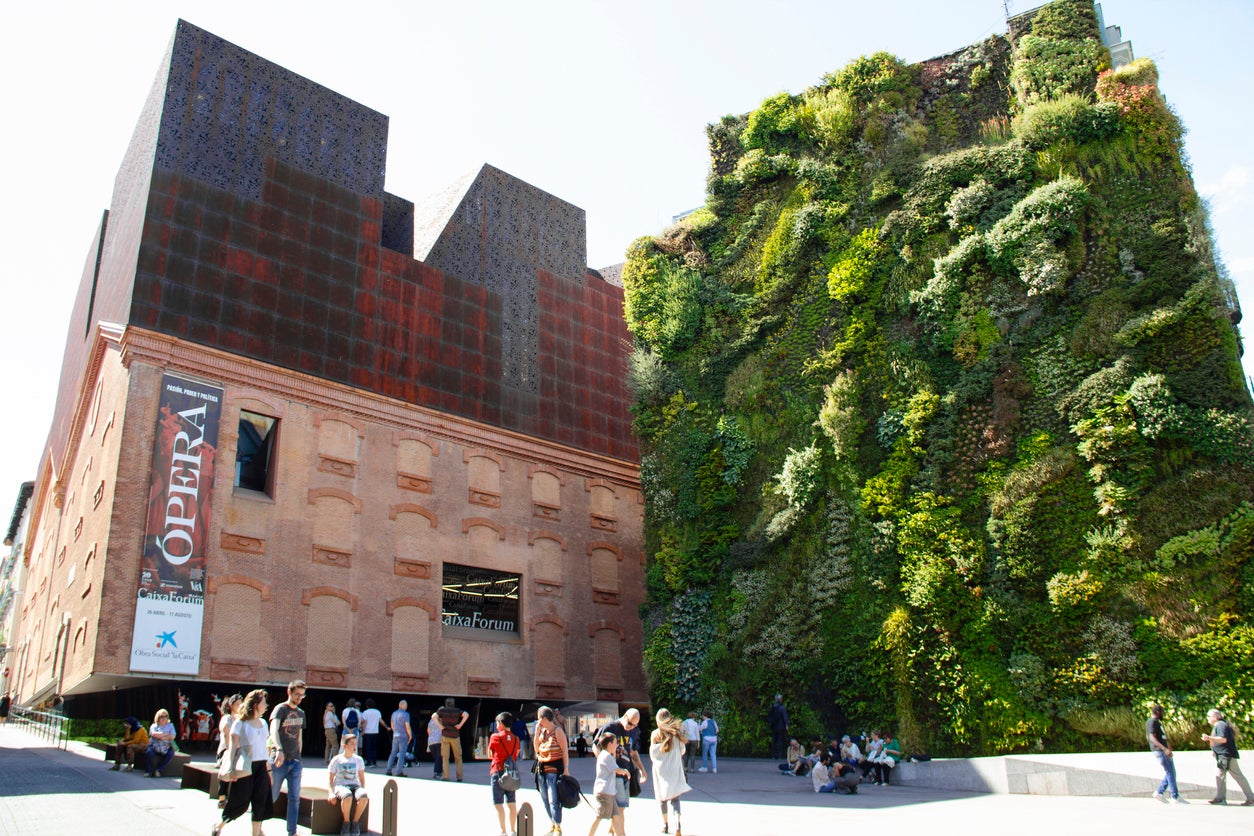
Architectural highlight
Swing by CaixaForum, a hyper-modern arts venue with an unmissable, huge mossy living wall. Inside you’ll find temporary art exhibitions on the likes of Miro, as well as music performances and larger-scale installations. And don’t miss the surreal botanical garden inside the main station terminal, Atocha.
Nuts and bolts
What currency do I need?
Euros.
What language do they speak?
Spanish.
Should I tip?
Five to 10 per cent, or simply round up a euro or two.
How should I get around?
Walking or by Metro. As neighbourhoods are spread far and wide, get to know the Metro on day one – it’s clean, safe and easy to use, with lines marked out in playschool bright colours as well as numbers. A 10-journey Metro card costs €12.20, plus €2.50 for the reusable smartcard to load it on (so €14.70 total). Or top up journey by journey: they cost between €1.50 and €2 depending on route and zone.
What’s the best view?
If you’re going to Corral de la Moreria, pause by the turn-off from Calle Bailen for a glimmering nighttime view across to the Palacio Real and the Cathedral (from Mirador Bailen).
Insider tip?
Get on local time as early as possible – people here do things late. That means late-ish opening hours mid morning, late-late lunches (2-4pm) and late-late dinners (9-11pm). Shifting on to that local schedule means you’ll get plenty of atmosphere on your dinners and drinks out, and allow for some sightseeing time into early evening, too. Lots of the museums open until 8pm.
Getting there
Trying to fly less?
You can travel from London to Madrid entirely by train: take the Eurostar to Paris, then transfer to Gare de Lyon for a direct TGV train to Barcelona. From here you can catch the AVE-S103 high-speed train to Madrid Atocha.
Fine with flying?
EasyJet flies from Bristol, Edinburgh, Liverpool and Gatwick ; other airlines with direct flights include British Airways, Ryanair and Iberia.
Read more on travel in Spain
Join our commenting forum
Join thought-provoking conversations, follow other Independent readers and see their replies
Comments
Bookmark popover
Removed from bookmarks